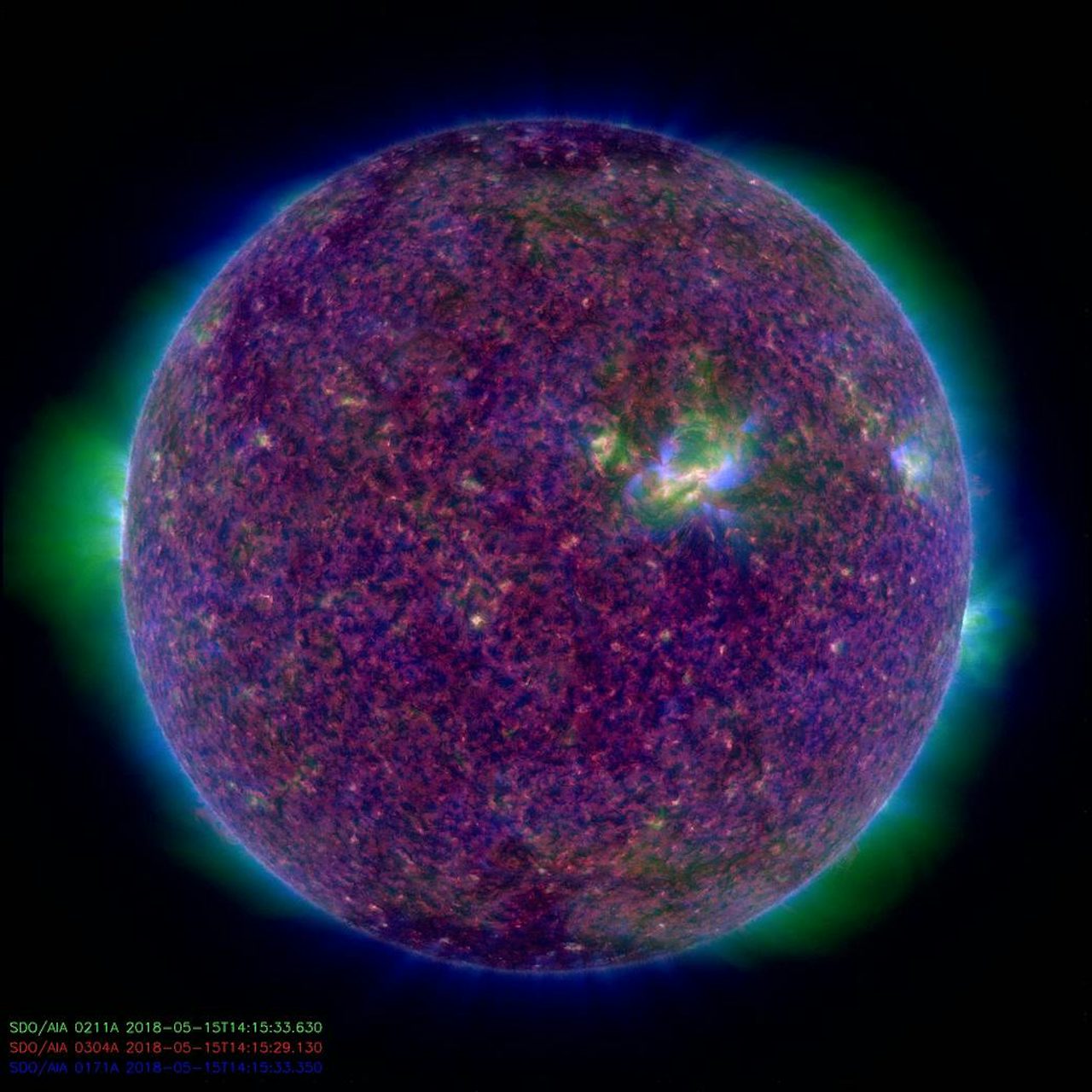Here’s a nice thing to remember: human eyes can only see the very brightest light wavelength from the sun, and it’s intensely vain to believe that the wavelengths we see are “correct” or represent truth about the world. The senses that guide your experience as a sentient being aren’t capable of providing an accurate representation of “truth” about the universe. Now, let’s talk about the way that we try and compensate for these cripplingly terrifying human inadequacies that are impossible to fix without the aid of technology.
A set of images and videos of our sun was released today from NASA’s Solar Dynamics Observatory (SDO), a several-hundred-pound satellite that’s been hurtling through space since 2010 gathering data about the sun in order to understand how it affects our climate. The SDO collects data about light and energies, including magnetic fields, that we can’t see (but dogs and primates maybe can).
First, press play.
Now:
This still image of the sun was generated using gif-bourne data visualized from three wavelengths of light: 304, 171, and 211 Angstroms—a unit for measuring light that’s equal to one hundred-millionth of a centimeter.
At 304 Angstroms, you can see freshly-generated helium churning on the surface of the sun.
At 171, flares of Iron-9 explode and flare across the sun at temperatures of 600,000 Kelvin.
And at 211 Angstroms, ink-like splotches of iron-14 are visible across the surface, while wide range of violet magnetic radiance leaks around the edges of the sun and into space. The temperature of the iron-14? Two million degrees Kelvin. (That’s very, very hot. A lot of Kelvins. So many.)
Combined, these wavelengths provide a trippy vision of the sun that’s a complete departure from how we naturally perceive it. These images are not “false” or any less representative of the “truth” than what we can see with the naked eye.

